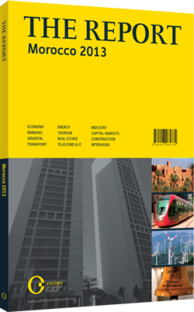Wastewater management: Improvements made to sewerage treatment and network connections
Growing water consumption trends and climate change are straining Morocco’s water resources. With projections of a rise in national water needs from 1.1bn cu metres per year in November 2012 to 1.6bn cu metres per year by 2030, the available water resources will continue to decline as desertification takes its toll. Indeed, a decrease in rainfall of 50% is expected across the Middle East and North Africa. By 2050, the World Bank projects that the amount of available water per capita will be halved, highlighting the need for a plan of action.
FILLING IN THE GAPS: Morocco’s wastewater facilities also remain inadequate, with only 21% of waste-water treated in 2012, up from 8% in 2005. To ensure the protection of water resources and improve the health of the population, the government launched the National Programme for Liquid Sanitation and Wastewater Treatment in 2005, which aims to purify 60% of used water in urban areas and connect 80% of the population to the sewerage network by 2020.
Another objective is the treatment and reutilisation of 100% of used water, at a cost of around Dh50bn (€4.45bn). Of this, Dh6.5bn (€580m) will be invested in sewerage projects in 2012-16 to nearly double the treatment capacity of the National Electricity and Drinking Water Authority from 180,000 cu metres per day to more than 340,000 cu metres per day and support the management of liquid sanitation services in 54 cities to benefit around 1.3m inhabitants. Improvements include the rehabilitation and expansion of wastewater systems to better connect users.
In September 2011 then Prime Minister Abbas El Fassi announced the state’s intention to fund the construction of 79 wastewater treatment plants by 2012 for more than Dh15bn (€1.33bn). At the time, 42 waste-water plants were already complete, but by November 2012, only 23 of the remaining 37 plants had been finished. Once completed, this initiative is expected to improve the sewerage network connection up to 72% and limit water pollution. In 2005 only 21 treatment plants existed in the kingdom, but by 2012 that figure reached more than 100. Although there is still more work to do, the growing capacity to treat wastewater has already led to an increase in treated used water from 600m cu metres in 2005 to 700m cu metres in 2010.
“Wastewater has the important potential to increase water resources in Morocco,” said Mohamed Serraj, the director of planning at the National Office for Energy and Drinking Water Supply. “The reuse of treated wastewater is already operational in several cities, mainly for watering golf courses and green spaces and in the industrial field such as washing phosphates.”
Still, some say difficulties remain. “One of the current challenges is in matching Morocco’s urban growth with the right infrastructure investments, particularly in terms of wastewater treatment and water reuse.
Veolia and the Moroccan authorities have implemented such a strategy in Rabat, Tangier, Tetouan and Tamu-da.” said Jean Michel Tiberi, director-general of Veolia Maroc, an environmental services firm.
FUNDING: The state budget outlines investment commitments for wastewater projects of up to Dh400m (€35.56m) per year from 2006, covering 30-50% of the required funds. Public donors include the Department of the Environment and the Hassan II Fund for Economic and Social Development. The National Office of Drinking Water has also turned to loans from local banks and international donors. A rise in tariffs from Dh2 (€0.18) in 2005 to Dh3.5 (€0.31) in 2020 is expected to cover operating expenses, while the sale of treated waste-water for reuse could provide funding.
PRIVATE SECTOR INVESTMENT: Private firms experienced in the installation and management of water treatment and purification plants have been instrumental in realising the National Sanitation Programme, such as the Moroccan bureau of consulting engineers Novec’s participation in various water projects throughout the kingdom. Major works include the installation of a drinking water facility and a water treatment station working at 3.5 cu metres per second in Marrakech at a cost of Dh2.5bn (€222m) due to begin in 2015.
You have reached the limit of premium articles you can view for free.
Choose from the options below to purchase print or digital editions of our Reports. You can also purchase a website subscription giving you unlimited access to all of our Reports online for 12 months.
If you have already purchased this Report or have a website subscription, please login to continue.

